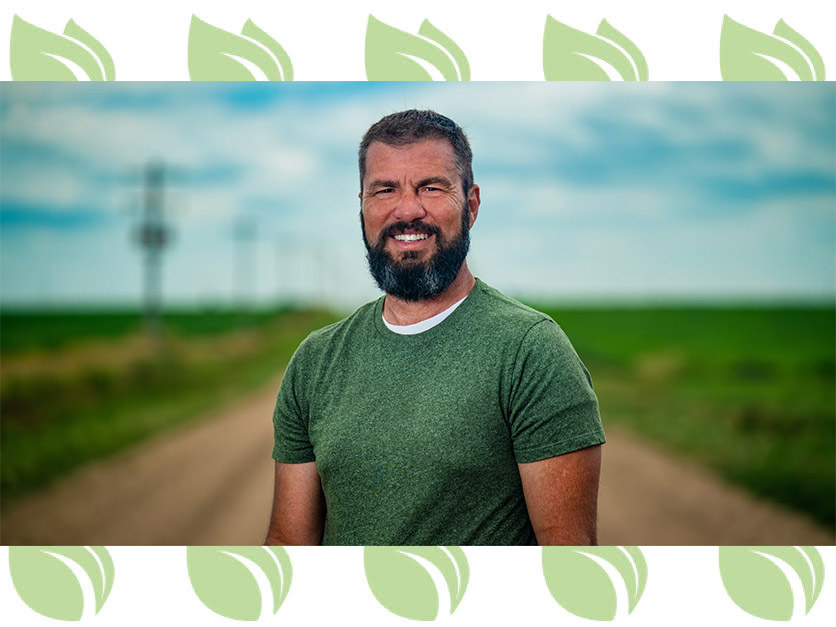Throughout my farming career, I have constantly researched and implemented technologies to minimize tillage, increase utilization and placement of fertilizer, and make data-based irrigation decisions. Each of these has allowed me to save more fuel, soil, and water than just a few short years ago.
Yet in talking with peers, whether it’s at the local coffee shop or in serving as the Chair of Field to Market: The Alliance for Sustainable Agriculture or a Board Member of the National Corn Growers Association, I realize the critical importance of ensuring that all farmers have the resources and support to weather short-term risks to productivity and profitability that limit broader conservation adoption. Transitioning to practices like conservation tillage and adopting new technology require upfront investment and a learning curve to realize benefits—a journey that many farmers cannot undertake alone.
As Secretary Vilsack advances USDA’s Climate-Smart Agriculture and Forestry Partnership Initiative this week, it is more important than ever before that we identify effective solutions to scaling climate-smart agriculture that support farmers in equitable sharing the risk and reward of transition to sustainable agriculture.
I am proud of the work that Field to Market is doing to better understand the barriers facing farmers and equip the value chain to act on this challenge.
In the 2021 State of Sustainable Ag Report, Field to Market and Trust in Food partnered together to better understand farmers’ perceptions of sustainability and extent of conservation adoption, synthesizing responses from more than 500 farmers across the country. Key findings revealed:
- Nearly two-thirds of farmers (62 percent) believe that implementing conservation practices typically improves a farming operation’s profitability in the long-term.
- Seventy-four percent responded that farmers should receive monetary incentives for utilizing certain practices that benefit the public good.
- Yet, only 15 percent have received better market access or additional revenue due to implementing conservation practices.
These findings highlight the importance of strengthening the farmer business case of adopting conservation systems and the critical need for much deeper collaboration with consumers and the broader industry to more fairly share in the short-term risk and up-front cost of transitioning to these practices.
Moreover, the fourth edition of Field to Market’s National Indicators Report underscores the need for greater collective action across the value chain in accelerating sustainable commodity crop production, highlighting concerning trends that progress across five key environmental indicators has largely plateaued over the last decade.
As a farmer, I have reflected on the innovations over the past thirty years that have helped me grow more with less impact—advances in drought and pest-resistant seed varieties and precision ag technology like variable rate and auto-steer. And as a leader committed to advancing a more sustainable and resilient food and agriculture system, I am struck by the essential task in front of all of us to unlock the next suite of innovations to ensure we continue to yield equal value for farmers and nature.
For the past year, Field to Market’s Innovative Finance Workgroup— a cross-sector coalition of dedicated sustainability leaders shepherded under the expert guidance of Field to Market’s Vice President, Betsy Hickman and Co-Chairs, Maggie Monast of the Environmental Defense Fund and Shelby Myers of the American Farm Bureau Federation—has worked to identify innovative approaches value chain actors can employ to better support farmers in addressing the agronomic and financial risk of scaling conservation adoption.
Their research and discovery culminated in a recent report identifying a dozen solutions meriting broader consideration. These innovative approaches range from pioneering ideas deserving of piloting and tailoring to address needs of U.S. row crop farmers to innovative strategies that deserve greater collective focus, resources and action to scale these solutions across cropping systems and geographies. Later this week, we are hosting a webinar to further discuss how to accelerate sustainable agriculture.
Solving the climate crisis is the greatest challenge and opportunity of our lifetime and agriculture has a unique contribution to make in building a resilient future. While our industry is not alone in the careful evaluation of our collective role in translating ambition into action to drawdown emissions and restore our climate to health, the stakes of getting this right are highest for farmers on the front lines of climate impacts—whether prolonged droughts, extreme flooding, or wildfires.
The race to accelerate a climate-secure future is one that we must win together. Our progress and ultimate success lie in learning together, mobilizing more capital to support farmers in the transition and pursuing solutions that create wins for farmers, business, society and our planet.
Brandon Hunnicutt serves as Chair of Field to Market: The Alliance for Sustainable Agriculture, and is a fifth-generation farmer from Giltner, Nebraska.
For more opinions and ag news, go to: www.Agri-Pulse.com.

